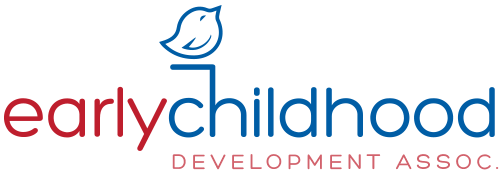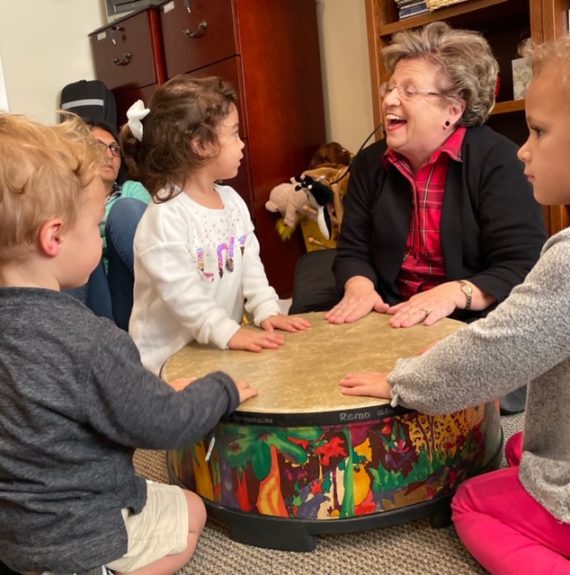Animate the language
Use variations in intonation and facial expressions in conversations with your child. Modulate volume, gesticulate, and emote. Maximize eye contact and let your child see your face and the movement of your lips when you are speaking. For those who are willing to experiment with makeup: bright red lipstick is a wonderful tool for keeping your little one’s attention. Your child is already fascinated by you, the beloved caretaker, so but by animating the way you talk you create interest around the act of talking itself.
Many researchers believe that music activates the entire brain by connecting the right and left hemispheres and maximizing learning capacity. That’s why teaching a child language concepts through music and dance, like we do at ECDA, is one of the most effective ways to facilitate the process. Playing and singing favorite songs and nursery rhymes will help your child memorize and solidify words and concepts with the help of melody and rhythm.
Read as often and as much as you can
In the world of many theories about early language acquisition, researchers seem to agree on one thing: the amount of time parents spend reading with and to their child is a good predictor of future reading success. You can start with simple board books and graduate to picture books and longer stories as your child gets older. Read favorite books over and over and encourage your child to join in with words he or she knows. Point at images and connect them with words and concepts. Keep referring to the books you have read and find connections to them in your everyday life.
Use media thoughtfully and sparingly
Don’t use television and media as a substitute for teaching your child language. TV programs and computer games lack the aspect of interaction which is essential for the learning process. Still, educational programing can become an effective tool in teaching your child concepts and expanding their language, but only if it’s used to supplement personal interaction with the child. Research has shown that “quality” screen time in the form of educational programming can strengthen children’s language skills, especially when co-viewed with a caretaker. The general guideline from The American Academy of Pediatrics is to limit TV watching to two hours of quality programming per day for children 2 and older.
Attend to ear infections
Ear infections are common, but they need to be taken seriously. Severe inflammation of the middle ear can put a child at risk for hearing loss and, consequently, language delay. If your child appears to have an earache, schedule an appointment with your pediatrician, and make sure to carefully follow any treatment recommendations, including a follow up consultation.
Always explore and discover
Be it virtual or real, a trip to the zoo, the aquarium, a gallery or a museum can open up a whole new world for your child. Utilize these experiences to create new stories, and as you narrate the day to your child, include new words, naming all that was seen and done. Always encourage inquiry and curiosity but be prepared for a slew of “why’s” as your child becomes more adept at verbalization.
We at ECDA have developed several programs dedicated to facilitating language acquisition through music, word games, and an array of interactive experiences. We teach children language in order to provide them with the means to communicate their thoughts and emotions and increase their ability to navigate the world. We wish you much patience and joy as you help your child learn, and hope that we can provide you with the necessary advice and support.


Recent Comments